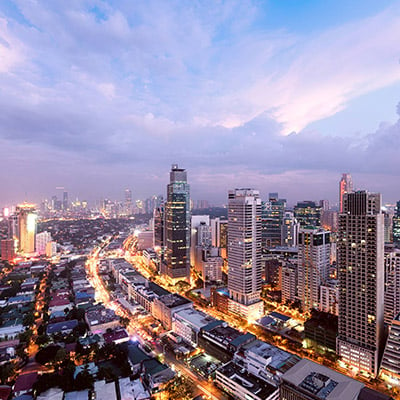-
Audit approach overview
Our audit approach will allow our client's accounting personnel to make the maximum contribution to the audit effort without compromising their ongoing responsibilities
-
Annual and short period audit
At P&A Grant Thornton, we provide annual and short period financial statement audit services that go beyond the normal expectations of our clients. We believe strongly that our best work comes from combining outstanding technical expertise, knowledge and ability with exceptional client-focused service.
-
Review engagement
A review involves limited investigation with a narrower scope than an audit, and is undertaken for the purpose of providing limited assurance that the management’s representations are in accordance with identified financial reporting standards. Our professionals recognize that in order to conduct a quality financial statement review, it is important to look beyond the accounting entries to the underlying activities and operations that give rise to them.
-
Other Related Services
We make it a point to keep our clients abreast of the developments and updates relating to the growing complexities in the accounting world. We offer seminars and trainings on audit- and tax-related matters, such as updates on Accounting Standards, new pronouncements and Bureau of Internal Revenue (BIR) issuances, as well as other developments that affect our clients’ businesses.
-
Tax advisory
With our knowledge of tax laws and audit procedures, we help safeguard the substantive and procedural rights of taxpayers and prevent unwarranted assessments.
-
Tax compliance
We aim to minimize the impact of taxation, enabling you to maximize your potential savings and to expand your business.
-
Corporate services
For clients that want to do business in the Philippines, we assist in determining the appropriate and tax-efficient operating business or investment vehicle and structure to address the objectives of the investor, as well as related incorporation issues.
-
Tax education and advocacy
Our advocacy work focuses on clarifying the interpretation of laws and regulations, suggesting measures to increasingly ease tax compliance, and protecting taxpayer’s rights.
-
Business risk services
Our business risk services cover a wide range of solutions that assist you in identifying, addressing and monitoring risks in your business. Such solutions include external quality assessments of your Internal Audit activities' conformance with standards as well as evaluating its readiness for such an external assessment.
-
Business consulting services
Our business consulting services are aimed at addressing concerns in your operations, processes and systems. Using our extensive knowledge of various industries, we can take a close look at your business processes as we create solutions that can help you mitigate risks to meet your objectives, promote efficiency, and beef up controls.
-
Transaction services
Transaction advisory includes all of our services specifically directed at assisting in investment, mergers and acquisitions, and financing transactions between and among businesses, lenders and governments. Such services include, among others, due diligence reviews, project feasibility studies, financial modelling, model audits and valuation.
-
Forensic advisory
Our forensic advisory services include assessing your vulnerability to fraud and identifying fraud risk factors, and recommending practical solutions to eliminate the gaps. We also provide investigative services to detect and quantify fraud and corruption and to trace assets and data that may have been lost in a fraud event.
-
Cyber advisory
Our focus is to help you identify and manage the cyber risks you might be facing within your organization. Our team can provide detailed, actionable insight that incorporates industry best practices and standards to strengthen your cybersecurity position and help you make informed decisions.
-
ProActive Hotline
Providing support in preventing and detecting fraud by creating a safe and secure whistleblowing system to promote integrity and honesty in the organisation.
-
Sustainability
At P&A Grant Thornton sustainability is at the core of our mission. We are committed to fostering a healthier planet through innovative practices that reduce our environmental footprint, promote social responsibility, and ensure economic viability for future generations.
-
Accounting services
At P&A Grant Thornton, we handle accounting services for several companies from a wide range of industries. Our approach is highly flexible. You may opt to outsource all your accounting functions, or pass on to us choice activities.
-
Staff augmentation services
We offer Staff Augmentation services where our staff, under the direction and supervision of the company’s officers, perform accounting and accounting-related work.
-
Payroll Processing
Payroll processing services are provided by P&A Grant Thornton Outsourcing Inc. More and more companies are beginning to realize the benefits of outsourcing their noncore activities, and the first to be outsourced is usually the payroll function. Payroll is easy to carve out from the rest of the business since it is usually independent of the other activities or functions within the Accounting Department.
-
Our values
Grant Thornton prides itself on being a values-driven organisation and we have more than 38,500 people in over 130 countries who are passionately committed to these values.
-
Global culture
Our people tell us that our global culture is one of the biggest attractions of a career with Grant Thornton.
-
Learning & development
At Grant Thornton we believe learning and development opportunities allow you to perform at your best every day. And when you are at your best, we are the best at serving our clients
-
Global talent mobility
One of the biggest attractions of a career with Grant Thornton is the opportunity to work on cross-border projects all over the world.
-
Diversity
Diversity helps us meet the demands of a changing world. We value the fact that our people come from all walks of life and that this diversity of experience and perspective makes our organisation stronger as a result.
-
In the community
Many Grant Thornton member firms provide a range of inspirational and generous services to the communities they serve.
-
Behind the Numbers: People of P&A Grant Thornton
Discover the inspiring stories of the individuals who make up our vibrant community. From seasoned veterans to fresh faces, the Purple Tribe is a diverse team united by a shared passion.
-
Fresh Graduates
Fresh Graduates
-
Students
Whether you are starting your career as a graduate or school leaver, P&A Grant Thornton can give you a flying start. We are ambitious. Take the fact that we’re the world’s fastest-growing global accountancy organisation. For our people, that means access to a global organisation and the chance to collaborate with more than 40,000 colleagues around the world. And potentially work in different countries and experience other cultures.
-
Experienced hires
P&A Grant Thornton offers something you can't find anywhere else. This is the opportunity to develop your ideas and thinking while having your efforts recognised from day one. We value the skills and knowledge you bring to Grant Thornton as an experienced professional and look forward to supporting you as you grow you career with our organisation.
At this modern time of general abundance in the world and, particularly, in our part of the world, we find our country with an incongrous incidence of widespread poverty. It appears inconceivable given that we were not in that bad situation when we gained independence from America 77 years ago.
A great number of our citizens presently live with inadequate access to food and are susceptible to diseases, destining them to have a comparatively shorter life. But more than this, this deplorable condition destroys their feeling of self-esteem that holds them back and, as a result, they live in desperation. The obvious lack of strong resolve and vigor in providing effective solutions to this huge problem is akin to being inhumane.
This condition of widespread poverty currently existing in the country is the most important problem that our government, present and future, must focus on, day-in and day-out, and strongly endeavor to reduce such a situation very substantially within a reasonable period of time.
A recent nationwide poll of self-rated poverty indicates that 13.2 million Filipino families describe themselves as poor, or 48% of total families. Using the average number of 4.4 individuals forming one family implicit in related government statistics, it means that about 58 million Filipinos describe themselves as living in poverty. While that total may appear somewhat overstated, it does indicate the huge size of the problem.
On the other hand, the latest officially published poverty incidence rate among Filipino citizens is 23.7%, as estimated in the first semester of 2021, using an annual per capita income threshold of ₱28,996 or ₱127,582 per average family of 4.4 individuals as defined above. This official poverty incidence rate translates to 27.5 million Filipino citizens living in poverty (using the estimate of 116 million Filipino population as of November 16, 2023). This time, the income threshold appears low, and so doeshe resulting estimate of the total number of Filipinos living in poverty.
There is therefore a wide divergence between those two statistics. It may be reasonable to say that the true level is between 30% and 35% of the individual poverty incidence rate, or between 35 million and 41 million Filipino citizens. That’s a lot!
How did this happen? A thorough historical analysis of such a very unfavorable development may provide very interesting and illuminating information. But it will require a scholarly, thorough, and objective study, assuming that there are sufficient pertinent statistical recordsavailable. But engaging in that difficult task may no longer serve any useful purpose.
Instead, it may be more practical to analyze why the current cycle of Philippine poverty persists and does not go down to a reasonable level, say to less than 10% of the poverty incidence rate.
Let’s put to mind a family of 5 that is within the poverty incidence threshold. Almost certainly, neither of the parents had attended or finished college, and may not even have graduated from high school. As such, the father may be an agricultural worker or a low-skilled trade or industrial worker, working intermittently, not by desire, but by the varying availability of job opportunities commensurate to his skill. The mother may or may not be employed. In raising their three children, they have to send them to school. While primary and secondary education are free, they need to provide the children with meal and transportation allowances. Government subsidies for these school expenses are not widely provided in the Philippine school system, unlike in most other countries whose economies are within the level of the Philippine per capita GDP. The parents also need to pay for the costs of school projects and required school field trips.
Certainly, considering the family’s meager income, the children may not even finish high school, or if they do, there is a very high probability that their parents cannot afford to enroll them in college.
For those children who are able to finish high school, there is an opportunity for them to enroll in vocational training at TESDA. But TESDA training is not entirely free, especially for those whose homes are not near the training centers. They have to incur transportation and meal expenses. But more than these, generally, the cost of vocational training materials and protective gear hasto be borne by the trainees, like cloth materials for the dressmaking course and protective clothing for the welding course. In addition, the trainee has to pay for the cost of drug test upon entry and a proficiency assessment fee upon course completion, both of which are not cheap. As a result, most high school graduates who are not able to enter college also cannot enroll in TESDA vocational training because the cost of doing so is unaffordable.
Clearly, when these children grow up to adulthood and marry and have their own children, they unavoidably get into a similar economic situation as that of their parents. It is much worse for the children who get stunted because of poor nutrition in the early years of life, resulting in a detrimental mental development that can no longer be reversed.
As a result, the poverty cycle continues to persist on and on and seemingly cannotbe broken.
Under such circumstances, it is clear and obvious that external intervention is needed to break that ever-continuing poverty cycle. Private party intervention helps, but just to a bare minuscule degree considering the very large size of the problem. Only a whole-scale government intervention can produce an effective and enduring result.
Of all possible government intervention programs, getting the children living in poverty to finish higher education to enable them to obtain high-skilled work and therefore receive a higher wage is key. I realize that there are and have been continuing strong criticisms of the poor quality of the current Philippine education system. But that is a separate issue. We cannot wait for the education system to improve; we need to work under present conditions.
There are two schemes that, taken together, will be very effective. One is to provide entirely free primary andhigh school education and vocational training. This means giving free meals, transportation, and subsidizing additional education and training costs. This scheme has been adopted by many countries.
But that scheme by itself will not reduce poverty substantially in the near term. It must be twinned by a provision for a minimum family income that must be measured by taking into consideration the education and training subsidies mentioned earlier. Or, the two schemes may be combined to provide one minimum basic family income. Whether separate or combined, these schemes will replace existing ones that are aimed to serve the same purposes, but with ineffective results. I have written previously about providing a minimum basic income to families living in poverty, and I would no longer dwell on that important government assistance scheme in this present one.
I strongly believe the country can afford the costs of these interventions. We just need to have the political will to reorder our national budget priorities.
On two past occasions in public forums, I raised a question to the economist guest speaker to clarify how the often-repeated statement “if the economy grows enough, it will reduce poverty” works. In both ocassions, I did not get an answer that was clear enough for me.
What I now think is that a continuous, deliberate, and substantial government intervention in poverty reduction is absolutely necessary. Such intervention immediately results in increased income for Filipinos living in poverty, which drives increased people consumption which, in turn, unleashes a virtuous economic cycle of increasing economic factors resulting in higher economic growth….and further reduction of poverty.
Obviously, the Philippine government, if it really wants to solve this huge problem, must do a wholesale intervention to reduce substantially this existing inhumane, widespread Philippine poverty.
Starting now. I believe.
As published in Mindanao Times, The Manila Times, and BusinessWorld dated 26, 29, 30 November and 07 December 2023




